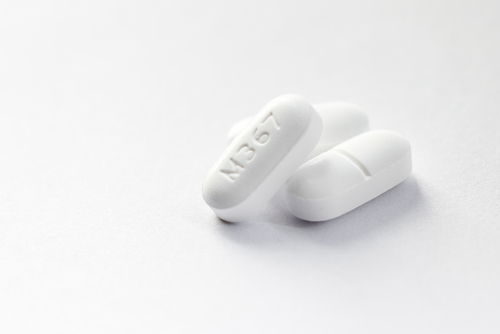Fentanyl drug deaths rise by nearly a third in England and Wales
Fatalities linked to synthetic opioid increased by 29% in a year, according to ONS figures
Deaths caused by the drug fentanyl rose by nearly 30% last year, according to figures from the Office for National Statistics.
While statistics show that the rate of deaths from drug poisoning in England and Wales has remained steady – 66.1 deaths per 1 million people (3,756 deaths) – fatalities involving the synthetic opioid fentanyl were up 29%. There were 75 deaths in 2017, up from 58 deaths in 2016.
Fentanyl has been found mixed with street heroin, causing accidental overdose in users. The drug can be up to 100 times stronger than heroin and is sometimes prescribed as a painkiller for the terminally ill.
One type of fentanyl, carfentanyl, is 10,000 times stronger and is used as an elephant tranquilliser. It was first seen mentioned in death certificates in 2017 and accounted for 27 deaths, 87% of the 31 deaths related to types of fentanyl in 2017.
In April 2017, after a spate of deaths linked to fentanyl in northern England, Public Health England issued a warning to heroin users to be extra careful when using the drug, urging them to test a small amount first and not to take it alone.
The ONS statistics also show that deaths from cocaine were up for the sixth year in a row. There were 432 deaths related to the drug in 2017, compared with 371 deaths in 2016.
In June a report by the European Monitoring Centre for Drugs and Drug Addiction (EMCDDA) found that purity of street cocaine across Europe was at its highest level in a decade and the number of people seeking treatment for use of the drug was on the rise.
Deaths caused by new psychoactive substances (NPS), such as the drug Spice, halved in 2017. There were 61 deaths from NPS in 2017, down from 123 in 2016. In 2016, the government introduced a blanket ban on the importation, production or supply of most NPS.
Rates of drug misuse deaths in England were highest in the north. The north-east had the highest rate of drugs deaths, with 83.2 deaths per 1 million people. The north-west had a rate of 64.7 deaths and Yorkshire and the Humber 54.5. London had the lowest rate of deaths of any region, with 24.6 per 1 million people in 2017.
Ellie Osborn, a health analysis statistician at the ONS, said: “The figures published today show that the level of drug poisoning deaths in 2017 remained stable.
“However, despite deaths from most opiates declining or remaining steady, deaths from fentanyl continued to rise in 2017 as did cocaine deaths which increased for the sixth consecutive year.”
Karen Tyrell, executive director at the drugs charity Addaction, described the statistics as devastating. “It’s such needless waste of life and a tragedy for so many families and loved ones. We have so much more to do. The truth is that most drug related deaths are preventable.
“People who use opioids (like heroin) often have cumulative physical and mental health problems. Most of them have had very difficult, often traumatic lives and we’re letting them down if we don’t give them the best care that we can.
“Nobody wakes up in the morning and decides to become dependent on drugs. Everyone deserves help, and we know that every person can recover with the right support.”
She added: “After 20 years in this sector, I know for sure that we need to do a much better job of providing safe and non-judgmental advice. The reality is there aren’t enough trustworthy places to get support around drugs and alcohol.”

